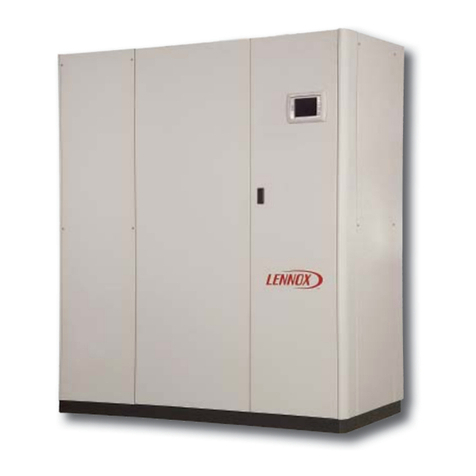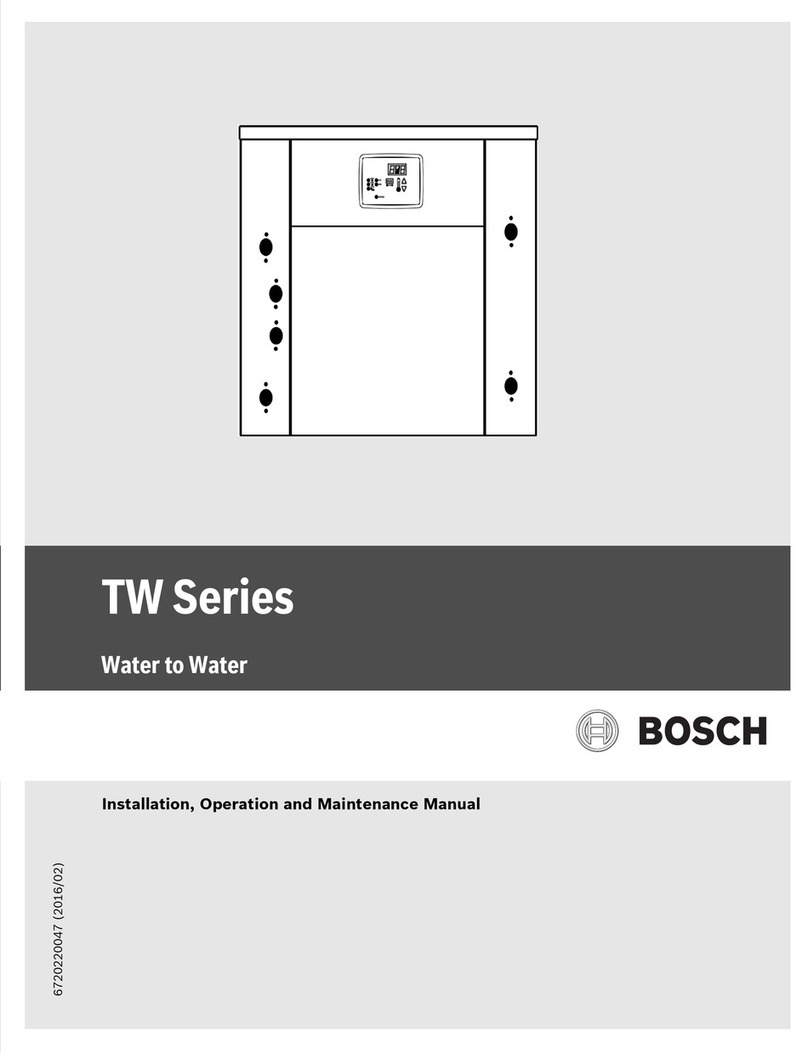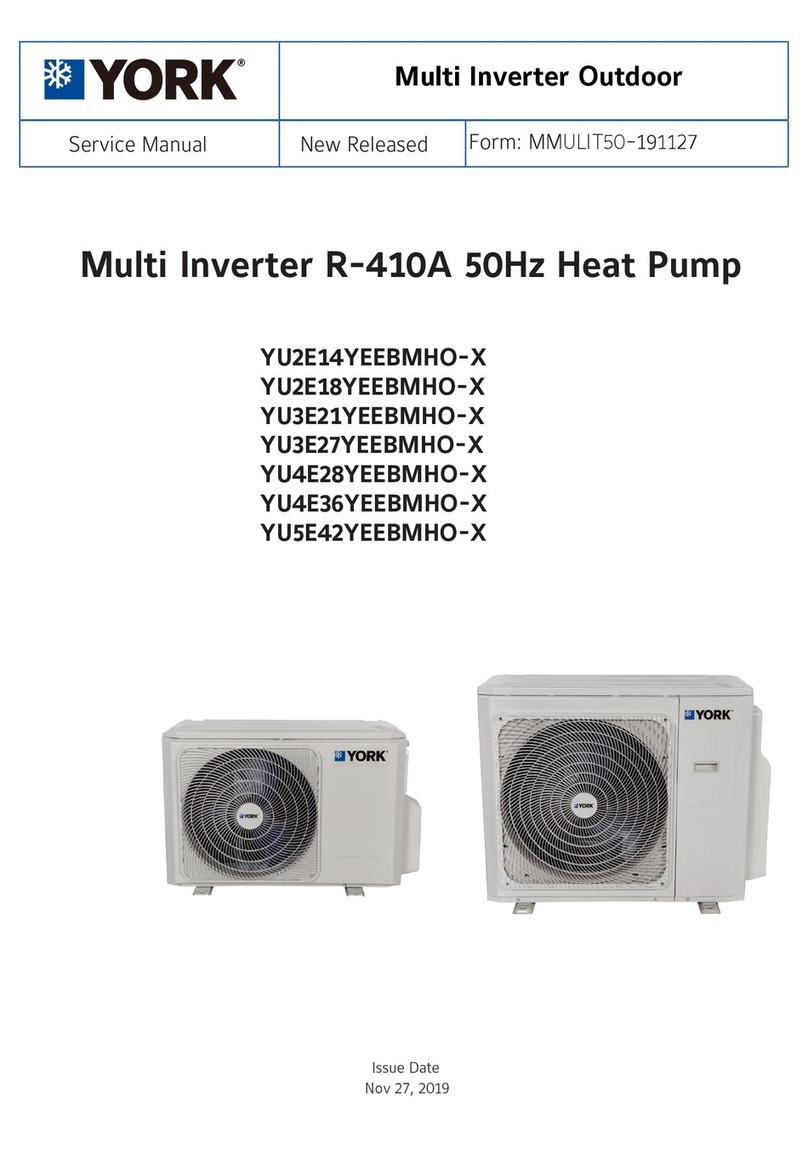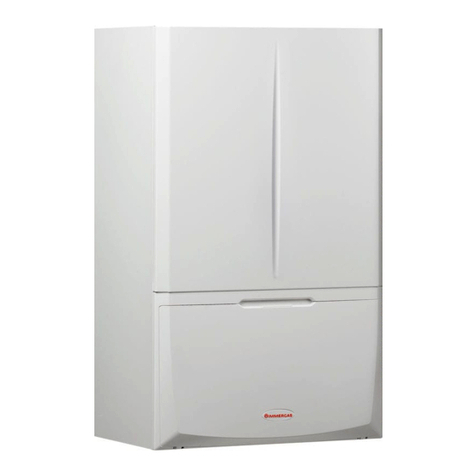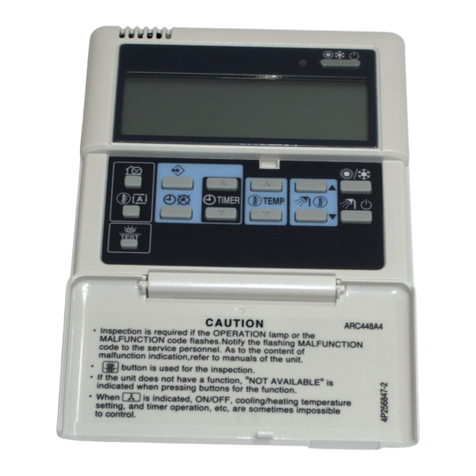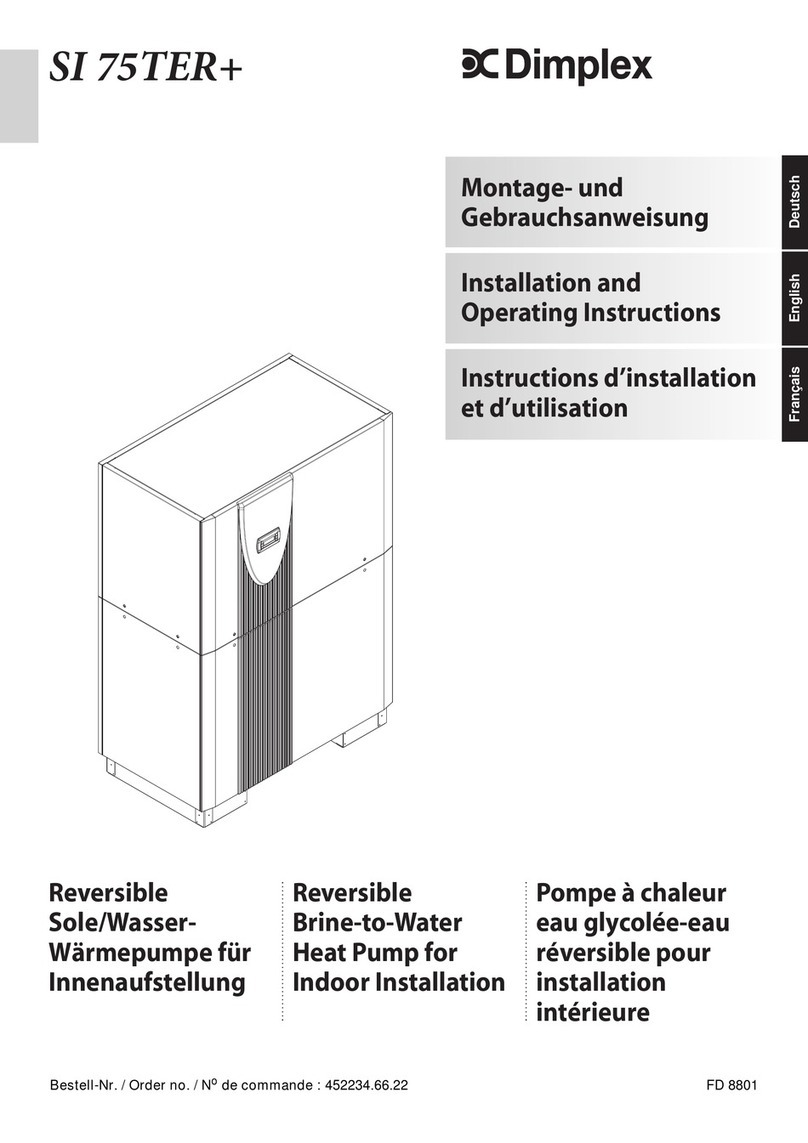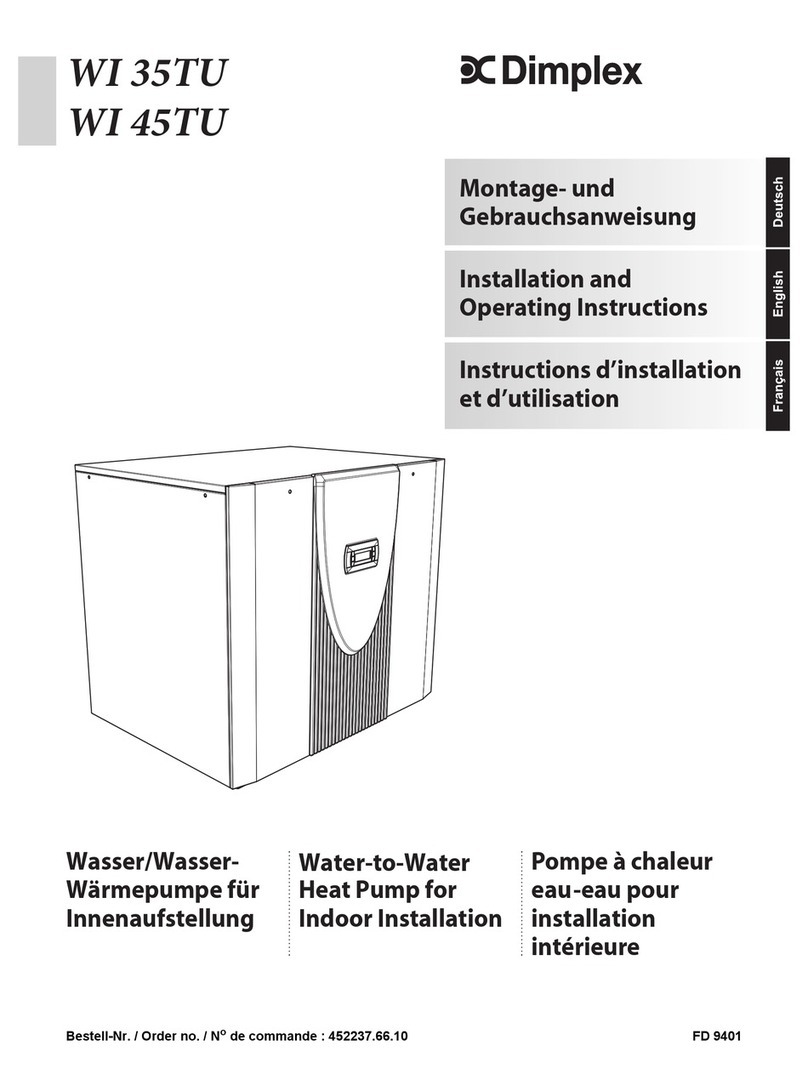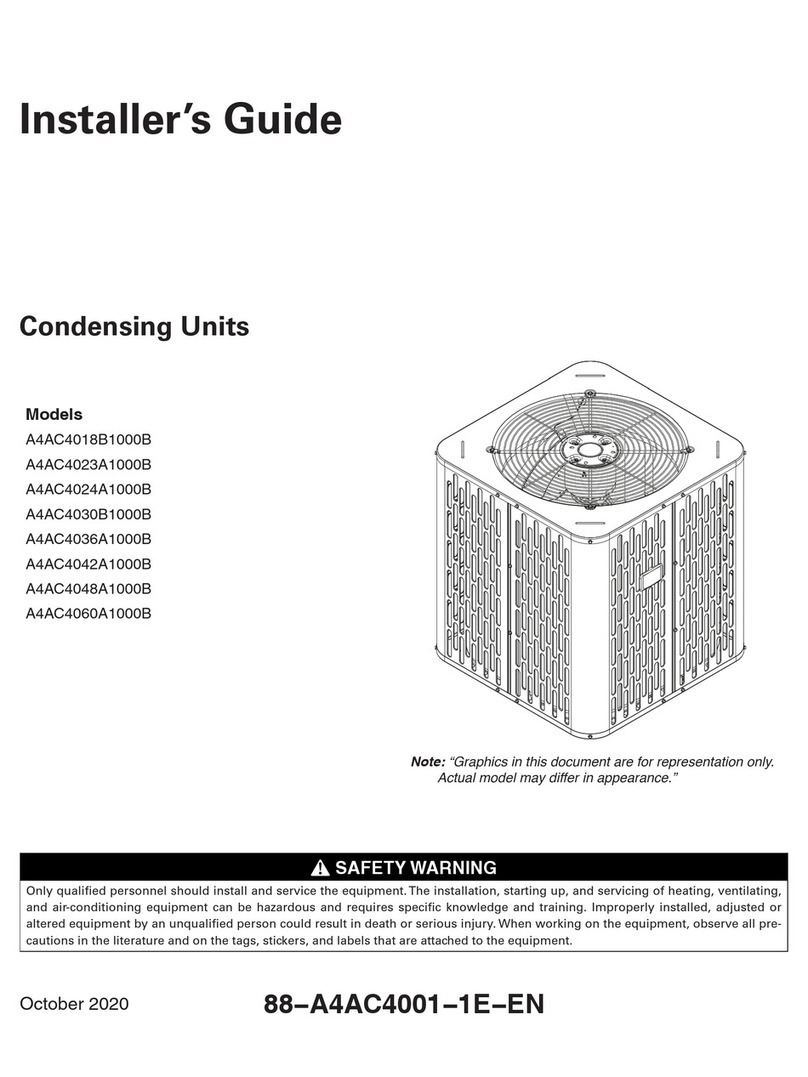
14
EFFICIENCY
Performance
During its operation, the heat pump:
Absorbs electricity for the operation of the compressor.
Absorbs heat from the environment (air, water or earth) and transfers it to the evaporator.
Releases heat in the condenser (water).
The main advantage of the heat pump is the fact that it can generate more energy (Thermal) than it consumes (Electrical) during
operation. The eciency of a heat pump is dened by the coecient of performance “C.O.P” that is a ratio of the heating provi-
ded to power required. The C.O. P varies depending on the type of heat pump and on the operating conditions and it generally
takes values between 3 and 5. This means that for every kWh of electricity consumed, the unit will release from 3 to 5 kWh of
heat.
As highlighted in The heat pump handbook chapter p. 9, the unit’s C.O.P. is inversely proportional to the temperature of the
water (generated) and directly proportional to the temperature of the source.
Seasonal eciency in heating
To properly assess the benets of heat pumps in terms of primary energy consumption, CO ₂ emissions and operating costs,
you should consider the seasonal coecients of performance (SCOP and SEER).
Unlike COP and EER, that refer only to precise and determined operating conditions, the seasonal energy eciency coecients
sum up the machine’s performance in a single value, considering the temperature variations in the air, in the generated water
and the partialisation grade of the compressor.
According to EN14825, the seasonal coecient of performance SCOP in heating of an air-water heat pump depends on four
variables:
Design temperature
The standard divides Europe in 3 climate zones: Colder, Average and Warmer and for each of them is identied a representative
location: Helsinki, Strasbourg and Athens characterised by design temperatures of –22 °C, respectively – 10 °C and 2 °C.
Water temperature on the user side.
The standard denes 3 types of distribution systems characterised by dierent water temperature values on the user side:
– Radiant panel (Twater xed at 35 °C or variable based on the temperature of the outdoor air).
– Fancoil (Twater xed at 45 °C or variable based on the temperature of the outdoor air).
– Radiators (Twater xed at 55 °C or variable based on the temperature of the outdoor air).
Compressor partialisation grade.
The standard takes into account the part load ineciencies at “On-O” operation of the heat pumps and provides appropriate
corrective coecients.
Outdoor air temperature frequency of occurence.
Understood as the frequency of occurrence (expressed in hours) of each value of outside air temperature, during the heating
season.
The SCOP is calculated, using the Bin Method, as the weighted average eciency (COP) of the heat pump divided by the fre-
quency of occurrence of the outdoor air temperature.
According to the standard, SCOP must be calculated for every climate zone and for all distribution systems dened by the stan-
dard.
The following table shows the seasonal coecient of performance (SCOP) of eHPoca and 3in1 for each climate zone and type
of heating system, as per standard EN 14825:
3in1 07M 3in1 12M
Climate zone City Design T
°C
SCOP
Radiant panel
SCOP
Fancoils
SCOP
Radiators
SCOP
Radiant panel
SCOP
Fancoils
SCOP
Radiators
Colder Helsinki –22 3.48 2.58 1.83 3.78 2.73 2.01
Average Strasbourg –10 3.96 2.86 2.08 4.30 3.12 2.20
Warmer Athens 24.72 3.41 2.47 4.93 3.53 2.51






















